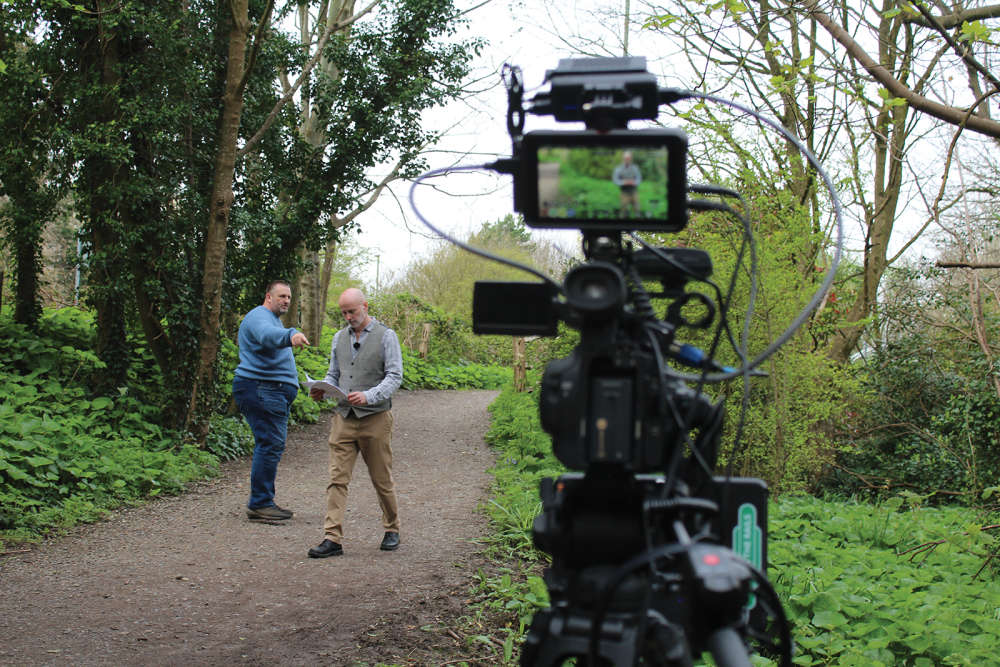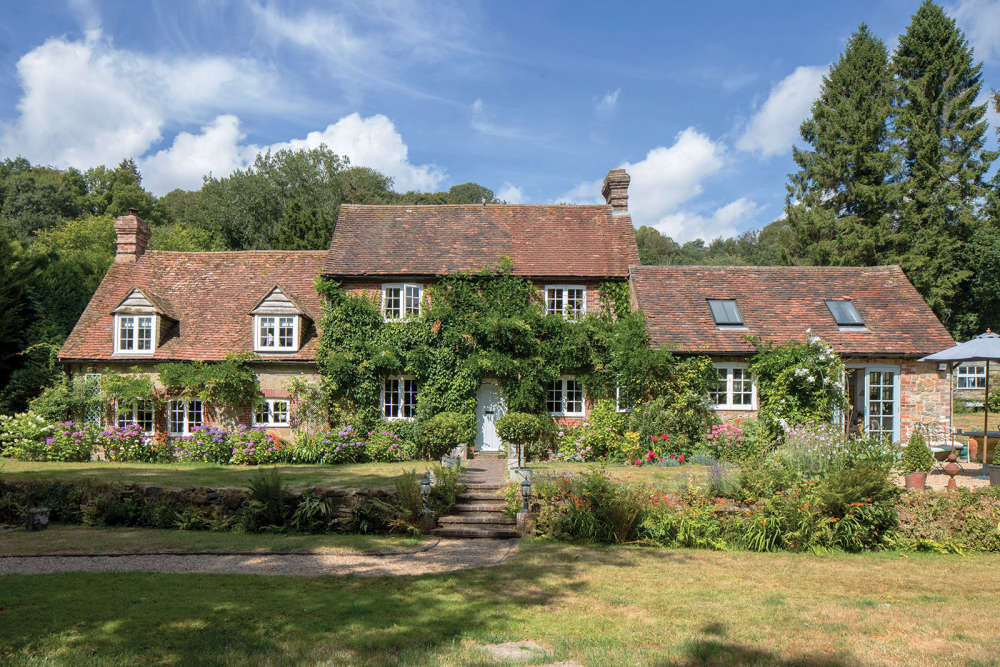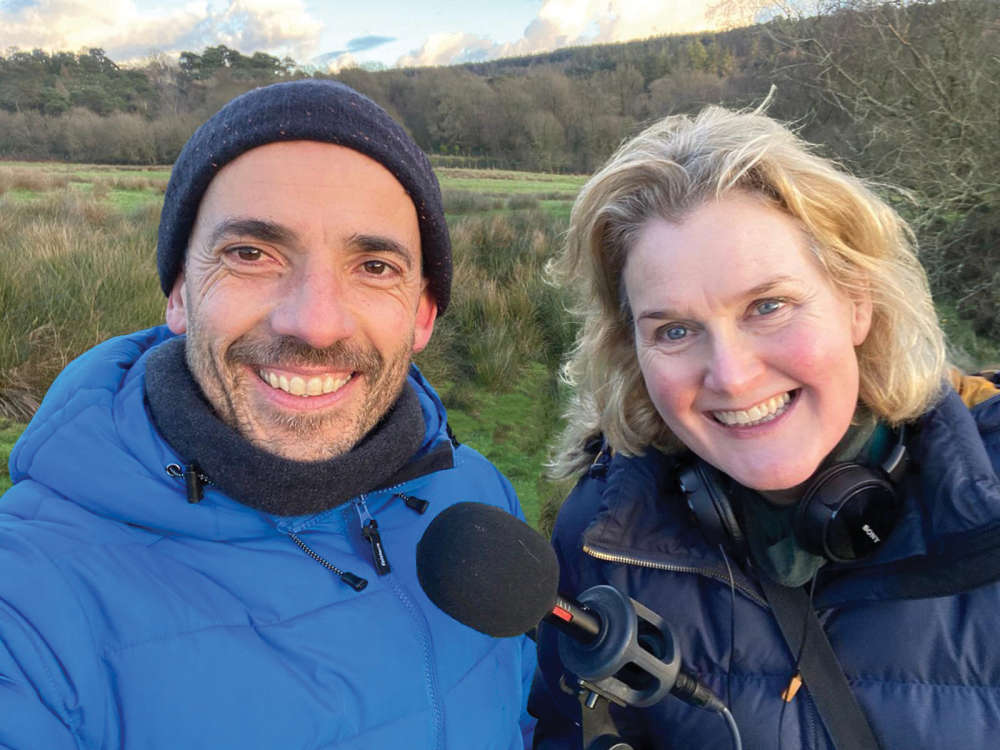
Ever wondered about the history and romance of the steam train that once trickerty- trocked it’s way along the lost Steyning Line? This dynamic group of friends did, so they made a documentary about it. Sara Whatley found out more
Your attention please! This train terminates here. Forever. I wonder if that is what the final passengers heard on Monday 7th March 1966 as the last train on the Steyning Line pulled into the station, never to operate again.
The Steyning Line, also known as the Adur Valley Line, as it followed the course of the river Adur, opened in 1861 connecting the busy port of Shoreham-by-Sea to Horsham in West Sussex. It serviced six main stations along the way – Bramber, Steyning, Henfield, Partridge Green, West Grinstead, and Southwater, and for many years of its existence was a busy line with daily passenger services and goods, mainly agricultural produce being sent to Brighton and Steyning markets.
The line was also heavily used during the war years carrying troops and munitions. But the fate of the Steyning Line was to be sealed with the 1963 Beeching Report ‘The Reshaping of British Railways’, and in 1966 the line was closed.
Zoom forward to today and two Upper Beeding residents, husband and wife team Chris Kirk and Lou Partridge were so intrigued and fascinated by the romance of the old steam railway that they decided to make a documentary about it.
“We live by the old Steyning Line and spend a lot of time with our daughter cycling and walking that path, really enjoying the countryside but also finding little snippets of history,” said producer and artist Lou. “So, when we were thinking about a subject for a fun hobby to keep us busy and for Chris to fulfil his film making needs, we thought the history, the trains, the nature and outdoors; it’s more than just the railway.”
Director Chris is a seasoned filmmaker but always found himself editing other people’s projects, so when the opportunity arose to really make something for himself, he grasped it with two hands. “We’re doing this to scratch that artistic itch,” he said.

The ‘Teaser Episode’ has been out on YouTube for some time now. “We weren’t expecting it to get 30,000 plus views in the first few weeks,
floods of emails and support from the community,” said Chris.
I can testify that it is a very engaging and enjoyable watch, and this is coming from someone with very little train knowledge. “We’ve tried to avoid all the technical language and think what an ordinary person would like to see and be curious about things that are there now and how they relate to the past – a bit Time Teamy.” The first full-length episode should be live now as it was planned to be released at the end of April.
It just so happens that the whole team are also friends from years gone by, so a day out filming is as much fun for them if they were making
the documentary or not. During our interview there is much banter about bacon sandwiches and pints after ‘wrap!’ has been called, and the enthusiasm and camaraderie they possess is genuine.
“Steve is a childhood friend,” Chris explained. “We met working at a model railway shop. He was serving customers and I was out the back packing boxes; this isn’t much different really.” Stephen Cranford is the face of this documentary, recognisable from his many television appearances on numerous DIY shows including BBC1’s ‘Interior Design Masters’, and also ‘Sort Your Life Out’. “I was in the police for many years then I left to do
a television broadcasting HND and work as a broadcaster. I’ve subsequently worked for BBC local radio and a variety of TV jobs,” said Stephen. But when it came to presenting this job there was no hesitation on Stephen’s part – he loves railways! “This is perfect casting for me, I don’t have to do faux enthusiasm,” he laughed.

Nowadays the path that runs along this disused railway line is called the Downs Link and runs 37 miles linking the North Downs Way in Surrey with Shoreham-by-Sea. It is a beautiful green corridor for people and wildlife alike and happily, along it, some fascinating relics of the railway past can be found.
West Grinstead in particular is a treasure trove of rail history, from the large railway carriage sitting on a length of track, to the remains of a hand-operated crane. Visitors can sit on the platform and admire the lovely West Grinstead sign, and for those that fancy delving deeper there is even a little bit of the original track remaining. “When the line closed all the track was removed, but a little siding was
on private land and British Rail didn’t have the rights to remove this track,” explained Stephen. “It’s completely buried under soil and leaves but you can just see glimpse of it. That for me was the loveliest thing.”
Mike Jaimes, the documentary’s transport historian, has a different favourite relic. “It was when we were filming at Bramber,” he said. “We got permission to go into someone’s garden and at the end of the garden you can see the back of the platform and the original lettering from the header board when you came into Bramber.”

Mike and Chris met when they were driving buses for Brighton and Hove Bus Company. They had a very similar dark sense of humour and soon got chatting in the canteen and realised they had an awful lot in common. They both had a history of working in television and were both frustrated creative’s who needed money from a dull day job.
“My passion has been transport since I was a kid – I’ve driven buses, trains, I’ve even driven trams in Blackpool,
and over the years I’ve accumulated an embarrassing amount of knowledge about railways and the transport industry,” said Mike. “When Chris said he wanted me to be a transport historian – I was just relieved I wasn’t being called an anorak for once!”
And so, with Lou’s artistic and project manager background – “The strength I bring to this project, as well as the artistic side and the stills photography, is I’m behind the scenes putting the order into the madness” – these four friends make the team behind this project. It seems very fitting to me that they were keen to work together to see more of each other and reconnect, and that such a huge aspect of this project is to bring the local community together through the old Steyning Line. “We have had overwhelming community support,” said Chris, and Mike continued, “That’s part of the appeal of it. It’s more than a documentary.”

As well as the actual episodes which will be released every two months, there is the Sidings project on their website as well. This is where they share some of the stories that have come to light, too good to miss and an important part of recording the history of this railway.
“Having worked in local radio for so many years I know that the best engaging stories are about people and their connection to things,” said Stephen, who proceeded to tell me a lovely story about a lady from Bramber who was a schoolgirl when the line was there. One day she lost
her new school shoe down the gap between the train and the platform and the whole train was shunted in and out of the station while the kindly guards fished out her shoe. “We are delighted to capture all these memories, before they are lost,” he said.
“We’ve had a huge amount of help from both Henfield and Steyning museums,” said Lou. “That was the first place we went to hoping to look at their archives, and they have given so much support and information.” There are also social media feeds where many people are engaging and sharing information about the railway and they will be at Steyning Festival on the 1st June, where they will be showing footage and having a Q&A session with local guests from the series.
Another social event they are bringing to the project is a live night in a pub along the railway line. “We recognise not all people are on social media,” Chris explained, so the thought is to film anyone who has connections with the line live on the night, and see what happens. “We need more submissions for the stations from Steyning up to Horsham. Any memorabilia, stories, photos, footage, the more unusual the better,” he said. And finally I ask what the hopes are for this project long term – do they want to get picked up by a TV station? “We’re having a lovely time doing it,” said Lou. “Meeting amazing people with amazing stories – we have the freedom to make it what we want. If it succeeds it would be fantastic, but if not, we’d still be having fun, and having a pint after a day of filming.”
For more information visit www.tracingtherails.com

 Home Style: Colourful New Life
Home Style: Colourful New Life
 Money Matters: Release Reality
Money Matters: Release Reality
 World Listening Day 2024: Learning to Listen to our Environment
World Listening Day 2024: Learning to Listen to our Environment
 Spotlight Events: What's On in July 2024
Spotlight Events: What's On in July 2024
 RSPCA Celebrates 200 Years
RSPCA Celebrates 200 Years
 Be Well, Move Happy: Learning a New Skill and Water Sports
Be Well, Move Happy: Learning a New Skill and Water Sports
 10 Ideas for a Screen-Free Summer
10 Ideas for a Screen-Free Summer
 Home Style: Bold Type
Home Style: Bold Type
 What to Watch in July 2024
What to Watch in July 2024
 The Exciting Appeal of the Beach Holiday
The Exciting Appeal of the Beach Holiday
 "I quite like to end up with a setlist that involves a catalogue of human misery..." Nish Kumar on his return to stand-up comedy
"I quite like to end up with a setlist that involves a catalogue of human misery..." Nish Kumar on his return to stand-up comedy
 Money Matters: The Revenue Generation
Money Matters: The Revenue Generation
 Home Style: A Better Way of Life
Home Style: A Better Way of Life
 Weddings: The Food of Love
Weddings: The Food of Love
 Vino, Vidi, Vici: The Vineyards, Breweries & Distilleries of Sussex
Vino, Vidi, Vici: The Vineyards, Breweries & Distilleries of Sussex
 Homes Extra: Digging a Design
Homes Extra: Digging a Design
 Listening to Nature: Meet the people behind the Ashdown Forest podcast
Listening to Nature: Meet the people behind the Ashdown Forest podcast
 Home Style: Tales from the Mill
Home Style: Tales from the Mill
 SPECIAL OFFER: General Admission Tickets To The Al Shira’aa Hickstead Derby Meeting
SPECIAL OFFER: General Admission Tickets To The Al Shira’aa Hickstead Derby Meeting
 A Gourmet Escape on the Eurostar: London to Amsterdam with Culinary Delights in Almere
A Gourmet Escape on the Eurostar: London to Amsterdam with Culinary Delights in Almere